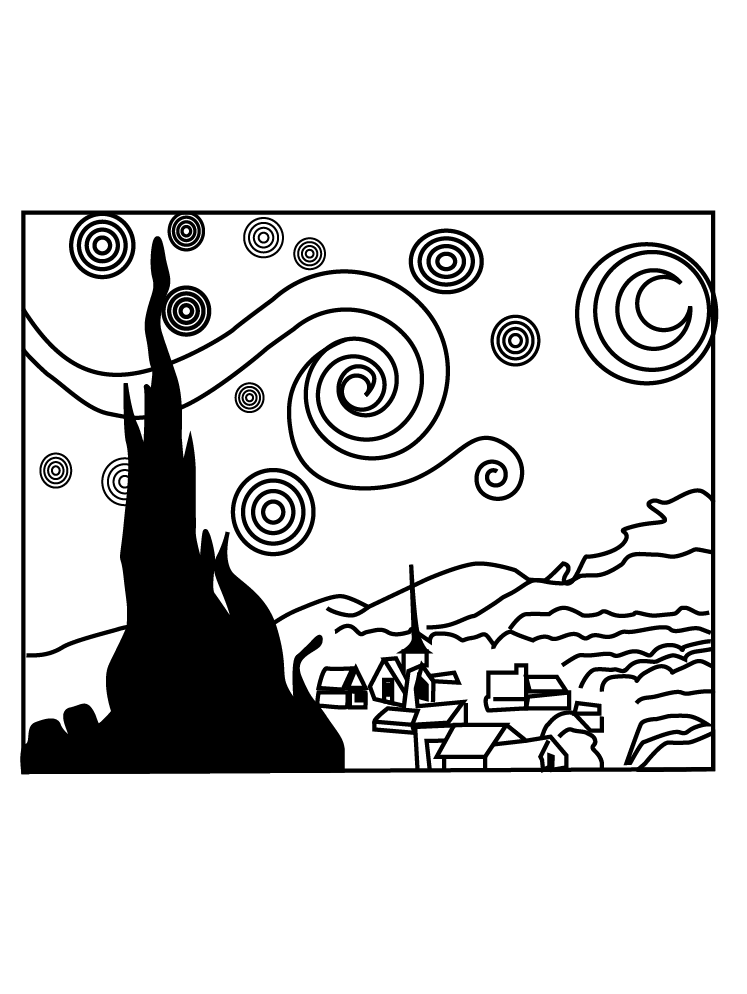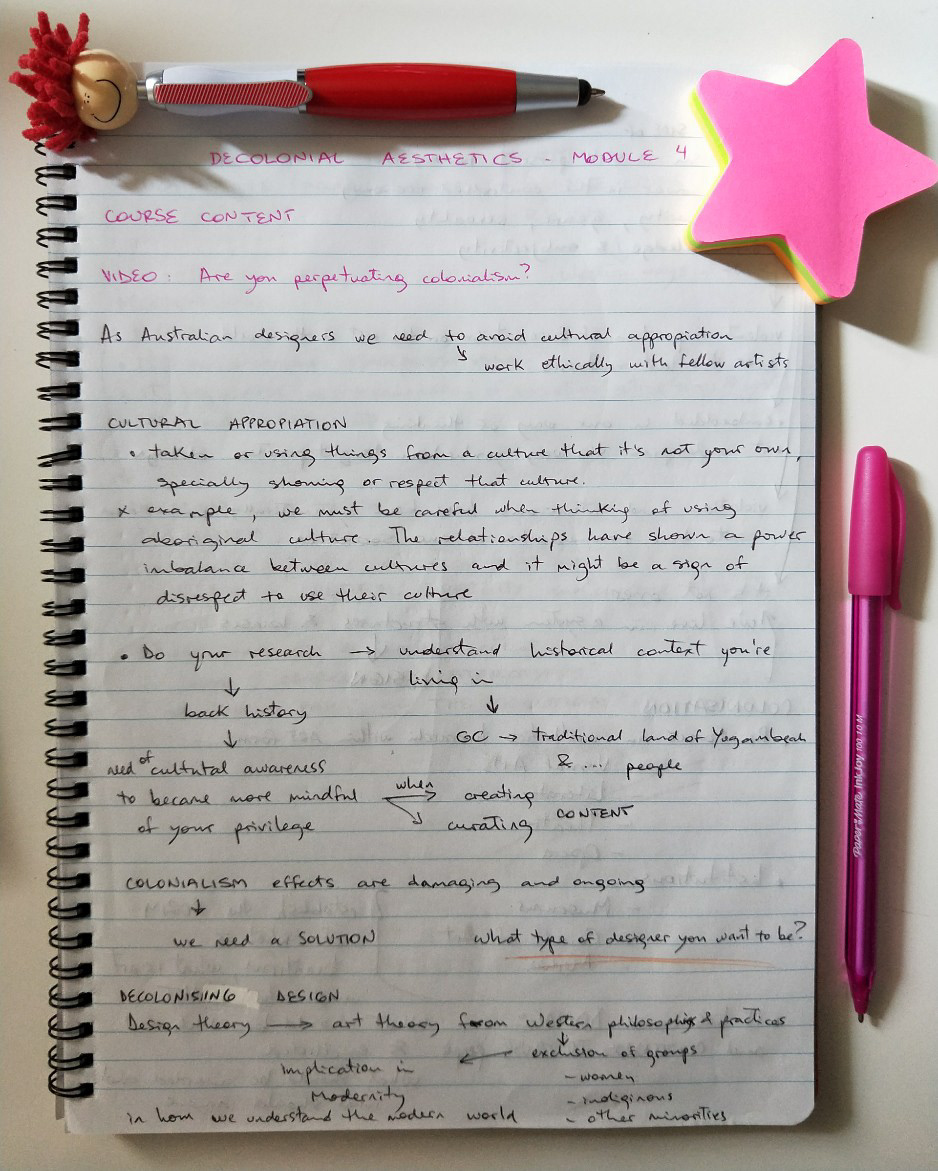

I enjoy reading the texts and taking notes by hand. Sometime ago I read that who reads and writes, reads twice. It's true for me! I make the notes in a way that I can perfectly visualize the whole text and I feel more confident when I have to talk about it.
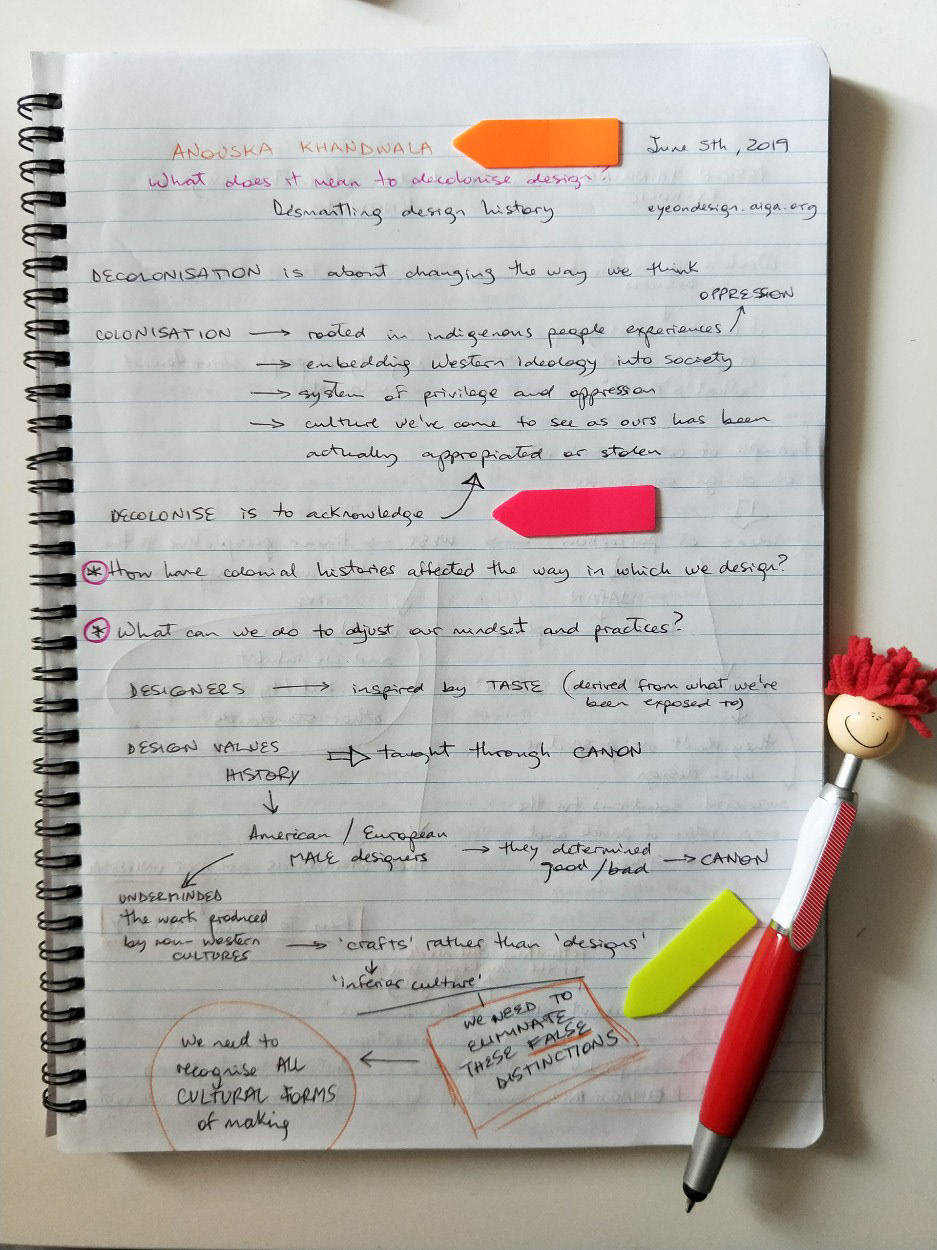

Khandwala's text made me aware of the concept of DECOLONISATION as to acknowledge the behaviors of a culture against another by stealing or appropriating their art, designs or artifacts.
Probably the highlight of the text is that we can, as designers, integrate a PROCESS of DECOLONISATION in our everyday practice. In this regard, she offers some ideas: be inclusive, promote conscious diversity by understanding not only the place that you offer 'at the table' but the type of job as well ('the chair'); other ideas were to welcome freelances, if you have a company, and work with minority owned printers.
Another key point of this reading was the relation between design and politics. All our choices and other's choices are political. We exclude or exclude content following certain patterns and past experiences that constitute what we are and who we are.
Finally, to keep evolving in the decolonisation process, we must be curious and educate ourselves about other experiences rather than European structures that have established norms for 2500 years and have left behind or, even worst, oppress, everyone that didn't follow them.
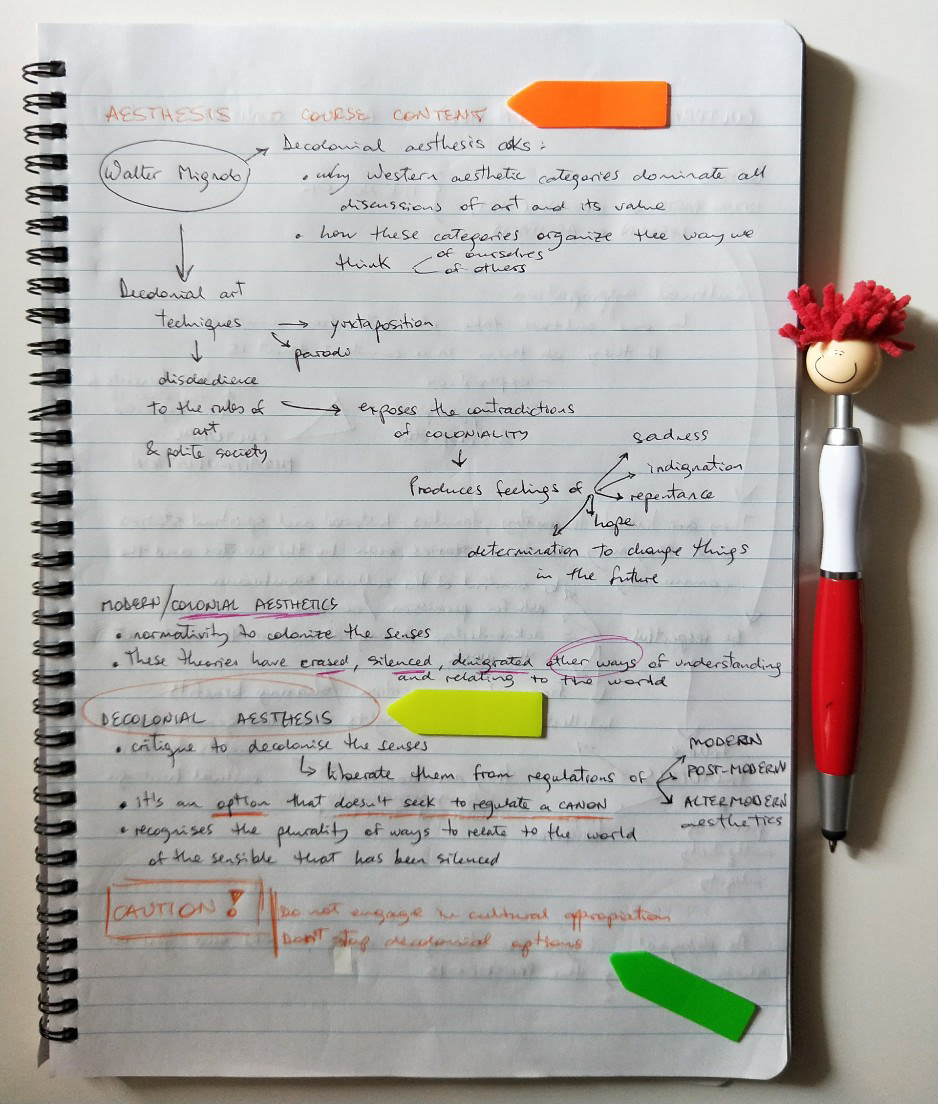
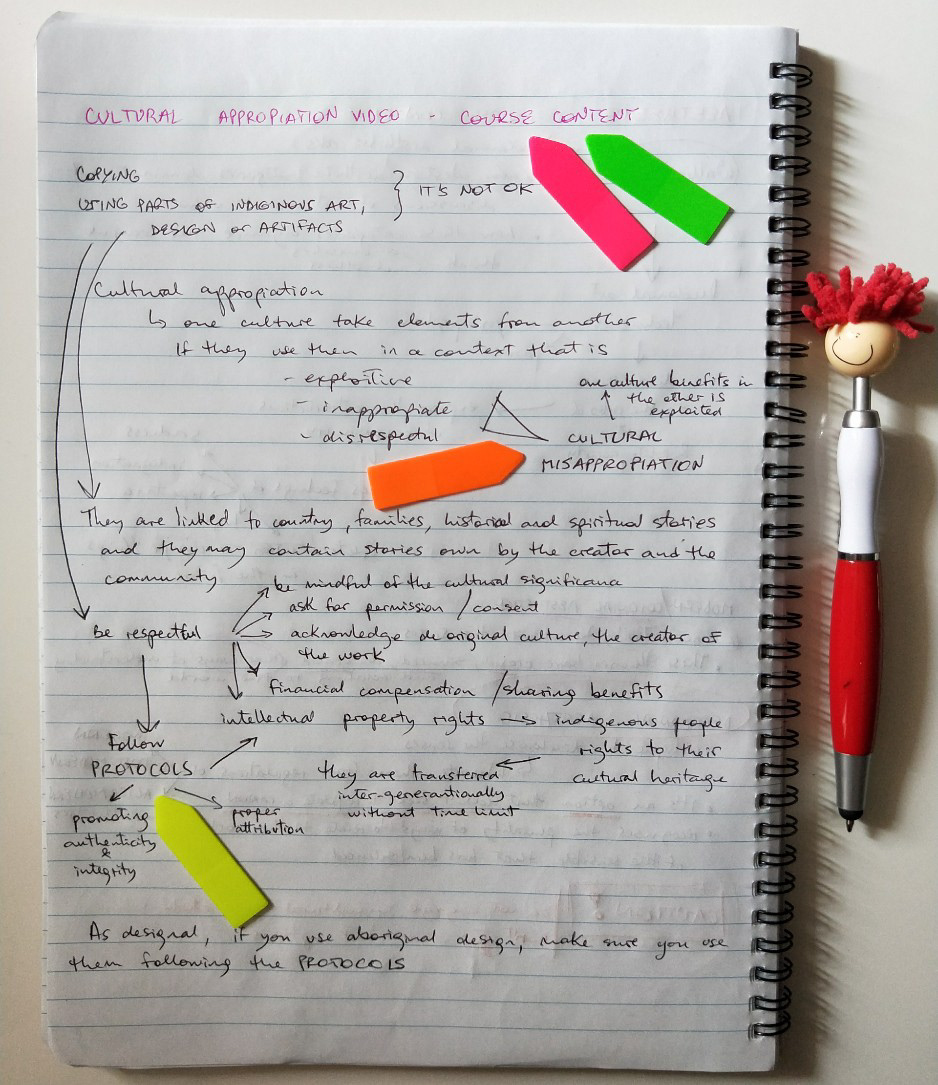
I found all texts of this Module 4 very interesting. I always wondered how to use aboriginal designs as part of my own compositions and now I understood that I just follow the Protocols that have been established to be respectful with other cultures.
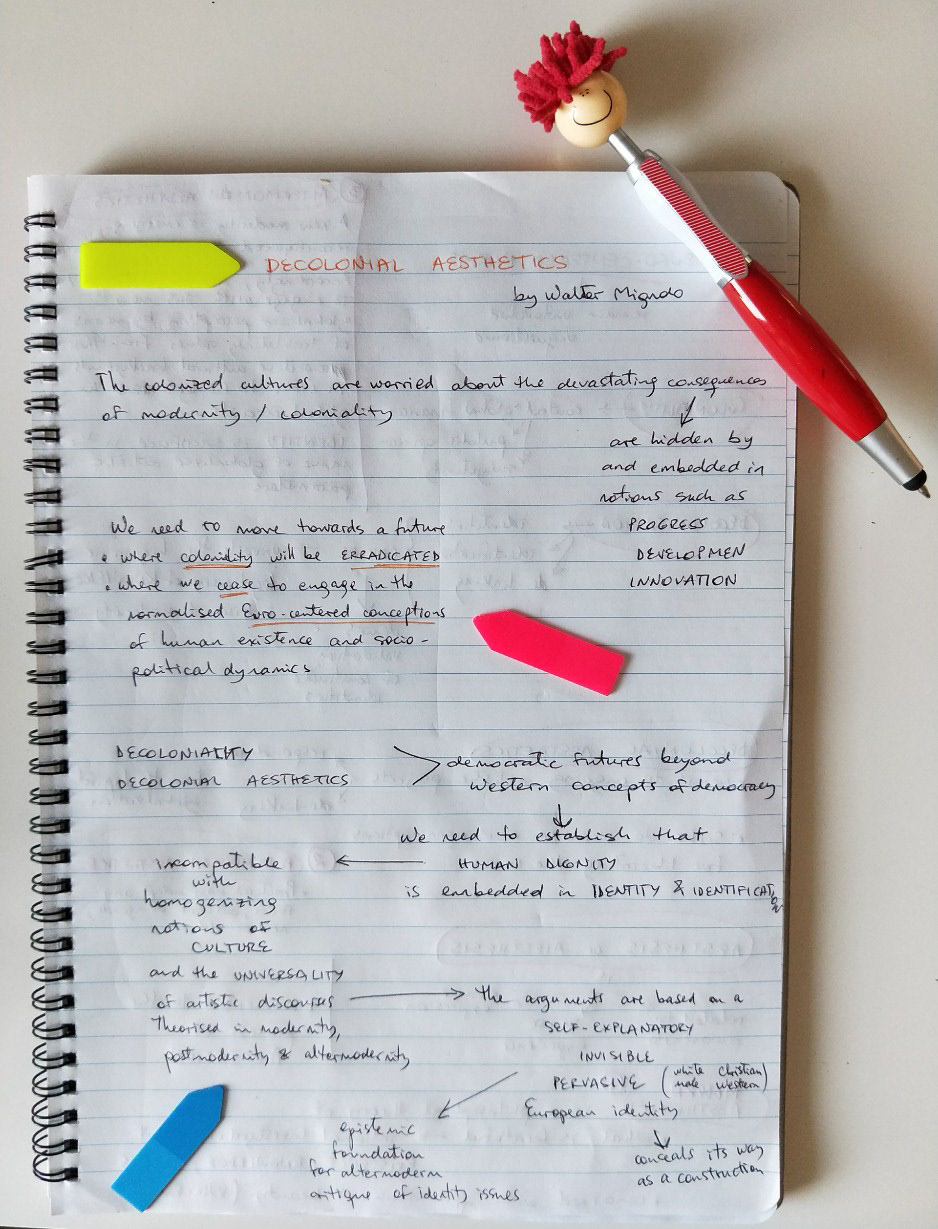

In this text, Mignolo makes a connection between human dignity and identity/identification. This is a very important point because when we homogenize culture and we universalize artistic discourses, the identities of each separate culture are blended and mixed. As a result, the cultures feel the loss of dignity.
Decolonial aesthetics work towards given this dignity back by delinking the cultures from the imperial globalization. Although, in alter-modern aesthetics IDENTITY is sacrificed in the name of globalized artistic parameters.



